Do you work in or around confined spaces? Confined spaces – such as manholes, crawl spaces, and tanks – are not designed for continuous occupancy and are difficult to exit in the event of an emergency. People working in confined spaces face life-threatening hazards including toxic substances, electrocutions, explosions, and/or asphyxiation.
OSHA has a new confined space rule that is exclusive to construction (29 CFR Part 1926 – Subpart AA). The standard sets forth requirements for practices and procedures to protect employees engaged in construction activities at a worksite with one or more confined spaces. Our course ensures construction workers stay compliant with the new rule.
- Confined space entry training for Construction is based on OSHA 29 CFR Part 1926 – Confined Spaces in Construction.
- Confined space entry training for the General Industry is based on OSHA 29 CFR 1910.146 – Permit-required confined spaces standards for general industry.
Confined Space Entry Training Overview
Confined Spaces Entry Training
Course Description
The Confined Spaces Entry Training in Construction safety course is a detailed review of confined spaces for attendants, entrants, supervisors and managers where the student will learn about OSHA’s new Confined Spaces in Construction regulation (29 CFR 1926 Subpart AA) and its fundamental requirements.
Newly Updated – The Confined Space Entry Training for Construction course has been updated for the new Subpart AA of 29 CFR 1926. This update improves the construction workers from being involved in accidents or injuries that are related to confined space hazards.
Hours: 8 hours
Pre-Requisites: None
Intended Audience
This training is intended for workers and professionals needing the necessary training in compliance with Subpart AA of 29 CFR 1926 and performing duties in confined spaces in the construction industry including:
- confined space entrants, attendants, entry supervisors, competent persons, safety managers, supervisors, and foremen.
If for the general industry, the training is intended for workers and professionals in the following industries:
- manufacturing, petrochemical, oil and gas, and utility industries.
Learning Objectives
The overall objective of this training is to protect those entering or working around a confined space. Through this course, the student will be instructed on the physical, chemical, and biological principles related to safe working with confined spaces and will be able to:
- Understand the scope & application of OSHA’s various confined space entry standards;
- Identify “Confined Spaces”, then determine if they are “Permit Required”;
- Understand OSHA requirements for developing and maintaining a “permit-required confined space entry program”;
- Know responsibilities of entrants, attendants, entry supervisors, contractors;
- Identify when you may utilize OSHA’s “Alternate Entry” and “Reclassification” procedures;
- Understand the requirements for “Rescue & Emergency Services”;
- Have a basic knowledge of the general use and limitations of related equipment.
Course Outline
- Module 1 – Course Orientation
- Module 2 – Overview and History of OSHA Confined Space Regulations
- Module 3 – Identifying Confined Spaces
- Module 4 – Identifying Permit-Required Confined Spaces
- Module 5 – General Responsibilities of Employers
- Module 6 – Options for Entering Permit Spaces Without a Permit
- Module 7 – Permit-Required Confined Space Entry – Program Requirements
- Module 8 – Entry Permits
- Module 9 – Employee Training and Duties
- Module 10 – Rescue and Emergency Services
- Module 11 – Atmospheric Monitoring
- Module 12 – Ventilation
- Module 13 – Course Review
Subject Matter Expert
Curtis Chambers, MS, is a Certified Safety Professional (CSP) with Masters of Science degree in Occupational Safety & Heath. He started a career in safety and health in 1985 and held positions in private industry, public agencies, and consulting for 20+ years. He is also an OSHA-authorized Outreach Trainer for Construction & General Industry Courses.
Module Quizzes and Final Exam
Students must have a minimum score of 80% to pass the quiz at the end of each section and the final exam at the end of the course. You will be given 3 attempts to pass the quizzes and the final exam.
Course Completion Certificate
Upon successful completion of the course, you may be able to print the corresponding training certificate on demand.
Supplementary training may be required, depending on site-specific standards. Enrollees are recommended to contact local regulatory authorities for complete OSHA construction confined space training guidelines.
Industry Terms
- Permit-Required Confined Space
- Confined Spaces
- Permit Space
- 29 CFR 1910.146
- Acceptable entry conditions
- Rescue service personnel
- Entry and Entry Permit
- Hazardous Atmosphere
- Ventilation Hoses
- Harnesses and Retrieval Lines
- Hazardous Atmosphere, Engulfment or Entrapment
- Immediately Dangerous to Life or Health (IDLH)
- Lockout and Tagout (LOTO)
- Non-permit confined space
- Representative permit space
OSHA – Construction Industry – Confined Spaces
- OSHA Webpage – Construction – Confined Spaces
- Confined Spaces in Construction (PDF). Final Rule, (May 4, 2015)
Compliance Assistance Materials
- Is 911 your Confined Space Rescue Plan? (PDF). OSHA Fact Sheet (April 2016)
- Temporary Enforcement Policy for Residential Construction Work in Confined Spaces (PDF). OSHA Memo, (January 6, 2016).
- Protecting Construction Workers in Confined Spaces: Small Entity Compliance Guide (PDF). OSHA Publication 3825, (September 2015).
- Asphyxiation in Sewer Line Manhole (PDF). OSHA Fatal Facts No. 12-2015, (July 2015).
- Temporary Enforcement Policy for Construction Work in Confined Spaces. OSHA Memo, (July 2015).
- Frequently Asked Questions, June 2016.
- Confined Spaces in Construction: Pits (PDF). OSHA Fact Sheet, (April 2015).
- Confined Spaces in Construction: Sewer Systems (PDF). OSHA Fact Sheet, (April 2015).
- Permit-Required Confined Spaces in General Industry (PDF). OSHA QuickCards™, (OSHA 3214-2011). Also available in Spanish (PDF).
Confined Space Regulation 1926 Update
OSHA issued a final rule for confined space in construction, increasing protections for construction workers in confined spaces, which went into effect on August 3, 2015. Confined spaces include manholes, crawl spaces, tanks and other spaces not intended for long-term occupation. Employers had until October 2, 2015 to fully comply.
Overall, the new rule offers construction workers similar protection to that of manufacturing and general industry workers. Differences unique to construction include requirements that ensure multiple employers share vital safety information and to continuously monitor hazards. OSHA expects that the rule will prevent nearly 800 injuries a year.
This new rule requires employers to follow several general requirements, including:
- Informing exposed workers by posting danger signs about the confined space (such as DANGER — PERMIT REQUIRED CONFINED SPACE, DO NOT ENTER)
- Preventing unauthorized employees from entering the space.
- Providing temporary covers when a confined space entrance is uncovered.
- Having a written permit space program available to employees prior and during entry operations.
- Providing training for employees to ensure they possess the required understanding, knowledge and skills to stay safe.
- Ensuring safe rescues by providing employees with proper personal protective equipment (PPE) needed to save workers in danger.
Additional Information
Training
- Calibrating and Testing Direct-Reading Portable Gas Monitors. OSHA Safety and Health Information Bulletin (SHIB), (September 30, 2013). Provides workers and employers guidance on calibrating and testing direct-reading portable gas monitors (hereafter, “DRPGMs” or “instruments”).
- Small Business Handbook (PDF). OSHA Publication 2209, (2005). Contains basic information about occupational safety and health, with specific focus on the needs of small business.
- Confined Spaces. National Ag Safety Database (NASD). Provides a linked reference to several videos relating to confined space entry.
Other Resources
- ANSI Z117.1 Committee. American Society of Safety Engineers (ASSE).
- NFPA 350: Guide for Safe Confined Space Entry and Work. National Fire Protection Association
More About Confined Spaces Entry Training in Construction
OSHA uses the term “permit-required confined space” (permit space) to describe a confined space that has one or more of the following characteristics: contains or has the potential to contain a hazardous atmosphere; contains a material that has the potential to engulf an entrant; has walls that converge inward or floors that slope downward and taper into a smaller area which could trap or asphyxiate an entrant; or contains any other recognized safety or health hazard, such as unguarded machinery, exposed live wires, or heat stress.
Construction workers and professionals who work in or around confined spaces are constantly exposed to life-threatening hazards. To further protect the workforce against evolving risks, the Occupational Safety and Health Administration (OSHA) issued a confined space standard that is specifically designed for construction work.
The Confined Spaces Entry Training in Construction safety course will explain the scope, definitions, requirements, processes and permits, training, duties of confined spaces personnel, rescue and employee participation requirements. It will also present a clear understanding of the requirements of OSHA’s Confined Spaces in Construction Standard (29 CFR 1926 Subpart AA).
Course Summary
Courses meet Federal and State training requirements and provides compliance with OSHA 1910.146 for general industry employees and OSHA 1926 Subpart AA for construction employees.
- OSHA Accepted Provider
- Meets Latest OSHA Standards
- Download certificate of completion
- Auto-bookmarking never lose place
- 100% Online – 24×7 Support
- Money Back Guarantee
Confined Spaces Entry Training: Construction – 8hrs
Price: $189.00
Confined Spaces Entry Training: General Industry – 8hrs
Price: $159.00
OSHA Training Group Discounts
Get up to a 40% group discount! Enroll and train all your food safety employees with a group enrollment. Track progress, generate reports, and manage learners using a cloud-based platform. More Info

















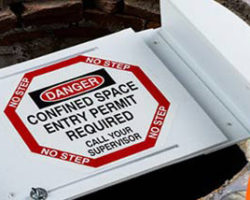
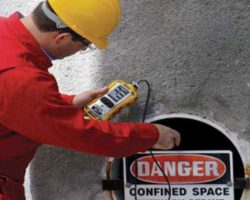
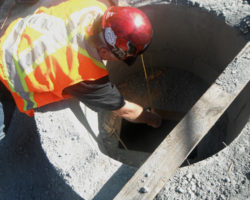
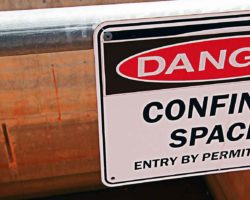
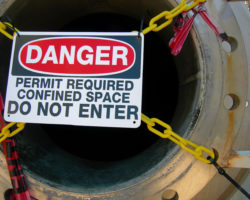

Visitor Rating: 5 Stars
Visitor Rating: 5 Stars